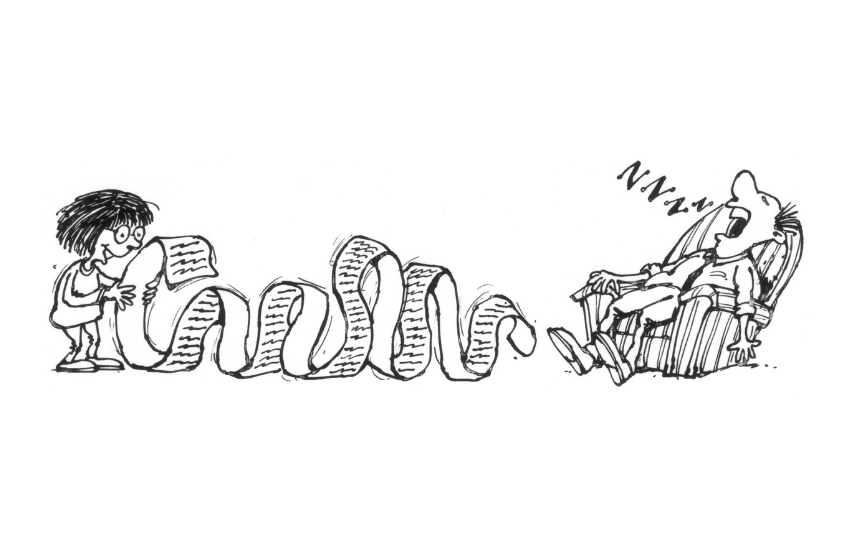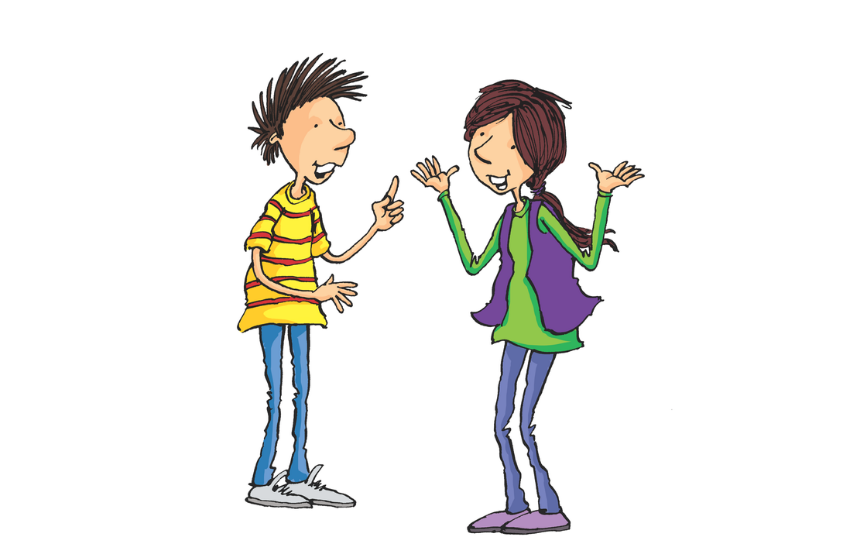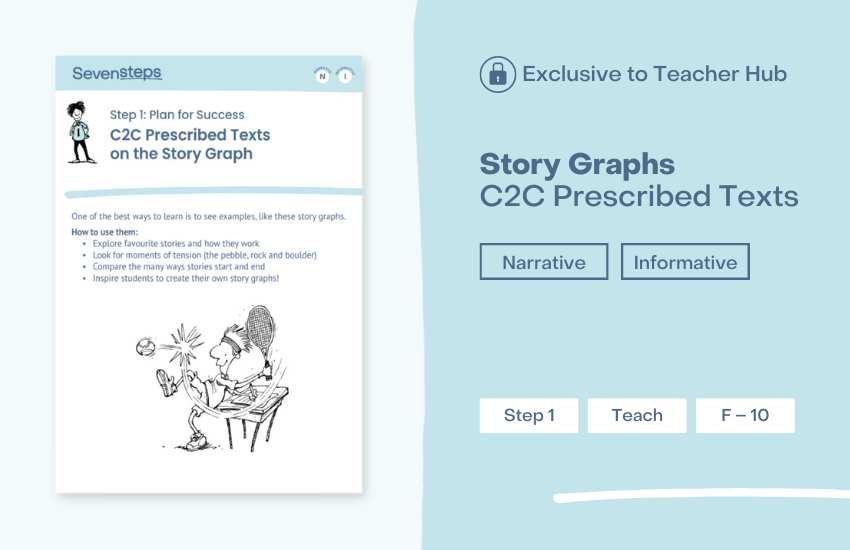Dialogue can be a source of pain for teachers – the Main Pain being students’ tendency to write pages of boring dialogue based on real life conversations; the ‘how are yous’ and ‘hellos’ that don’t reveal character, move the plot along, or make the writing more dynamic. Professional writers skip straight to good bits to keep things interesting.
Matty Forever, by Elizabeth Fensham, is a great example of a book that models how dialogue can be used to great effect in a narrative text.
Dialogue brings characters to life
Matty Forever kicks in with dialogue from the moment the two main characters meet:

‘Hello, Bill O’Connell,’ she said.
‘How do you know my name?’ he asked.
‘Just do. Can I come over?’
‘Sure.’
‘My name’s Mat,’ said the fairy, pushing her way through two broken palings that swung to the side like a kind of gate. ‘Mat Grube. With an “e” at the end so it rhymes with tube.’
Bill didn’t know what to say, but Mat filled in the awkward moment. She picked up a stone from the ground and said knowingly, ‘This is an igneous rock.’
Bill just nodded.
Every word in this piece of dialogue works hard and reveals a lot about the characters and their relationship. Just based on this meeting, who do you think will be the leader in this friendship?
Using dialogue to introduce the characters in a narrative is a great technique. Encourage students to write introductions that cut past the ‘Hello, how are you?’ and show who the characters are, what makes them tick and what their relationship might become.
Dialogue makes the writing more vibrant
Dialogue enlivens this next scene in which family and friends are making a mural on the wall at Matty’s house.
‘By late afternoon there were seven people drawing and painting on the wall. Tessa was doing a dancing elephant. A man with no left arm who had come to borrow a book from Donald was drawing a giraffe (because, like Bill, he could only draw one thing), and a lady called Pip who had come to help Tessa make strawberry jam painted some fluffy clouds on a blue sky. They were joined by Mat’s big brother, Tom, who loped into the room calling out, ‘Make way for the professional artist! Six months off getting his diploma!’
Tom’s words make the text more vibrant and help paint a picture in the readers’ mind of this happy, loud, artistic group of people all working together. When Bill meets the stuck-up Isabelle Farquay-Jones and her family, Isabelle’s wealthy home seems pretty dull in comparison.
Adding dialogue is a great way to make writing more interesting and dynamic. Encourage students to use dialogue to add life and humour to their narratives.
Dialogue moves the plot forward
As we come to the climax of the book, Fensham relies heavily on dialogue to move the plot forward. At a fancy dinner party at Isabelle’s house, Bill deliberately tells his ‘shameful’ secret. He knows that Isabelle will mock him and tell all the other kids at school. Why does he do it? To make amends to Matty, of course.
This is how readers know that Bill values Matty’s friendship, loyalty and courage more than ever.
…Bill realised that Mr Schneider was talking to him. He had not heard a word.
‘What?’ Bill asked, confused.
‘You mean I beg your pardon, Bill,’ corrected Mrs Farquay-Jones.
‘Pardon?’ said Bill clenching his teeth.
‘That’s okay, boy,’ said Sonny Schneider. ‘I was just asking what your daddy does for a living.’
‘My dad?’
‘Yes, your dad.’
Bill knew what he had to do. It might help to make up for his betrayal of Matty’s big secret. It was also going to free him. But the cost was going to be mighty big.
‘Dad’s in gaol.’
In this instance, dialogue delivers the action climax and sets up the character resolution. Encourage students to use dialogue to convey information and move the plot forward.
Putting it into practice
The key is to get rid of the ‘umms’, the ‘ers’, the half-finished sentences and the boring bits in real life conversations in order to create dynamic dialogue that brings characters to life, makes writing more vibrant and moves the plot forward. Encourage students to brainstorm ideas in groups and act out conversations before putting pen to paper.
Want more tips on Banning the Boring in dialogue? Read our blog post 188 words for SAID – but should you use them?

Dynamic Dialogue Action Activity
Gets students to work with a partner to write an introduction between one of the following pairs of characters that reveals something about each character:
- a dog and a vet
- an actress and a make-up artist
- a cook and a restaurant critic
- a skydiver and a bird
- a superhero and a villain
Repeat the activity using the same characters, but this time challenge students to write a piece of dialogue that tell us something about what is happening in the story.
Share some examples with the class and discuss what might happen next – good plot-moving dialogue will give rise to some interesting suggestions!
The Matty Forever Story Graph is available on Teacher Hub, along with 21 other Story Graphs for popular titles from the Queensland C2C recommended reading list including Russell the Sheep by Rob Scotton (Prep), The Lorax by Dr Seuss (Yrs 3 & 5), Deltora Quest: The Forests of Silence, by Emily Rodda (Yr 5), Nanberry: Black Brother White, by Jackie French (Yrs 4 & 8).
STEP Step 1: Plan for Success
PURPOSE Teach
RESOURCE TYPE Story Graph Collection
YEAR F–10
-
A selection of C2C prescribed texts plotted on the Narrative Story Graph (including Matty Forever)
-
Introduce and model the Narrative Story Graph before students draft their own


Become a Seven Steps member


